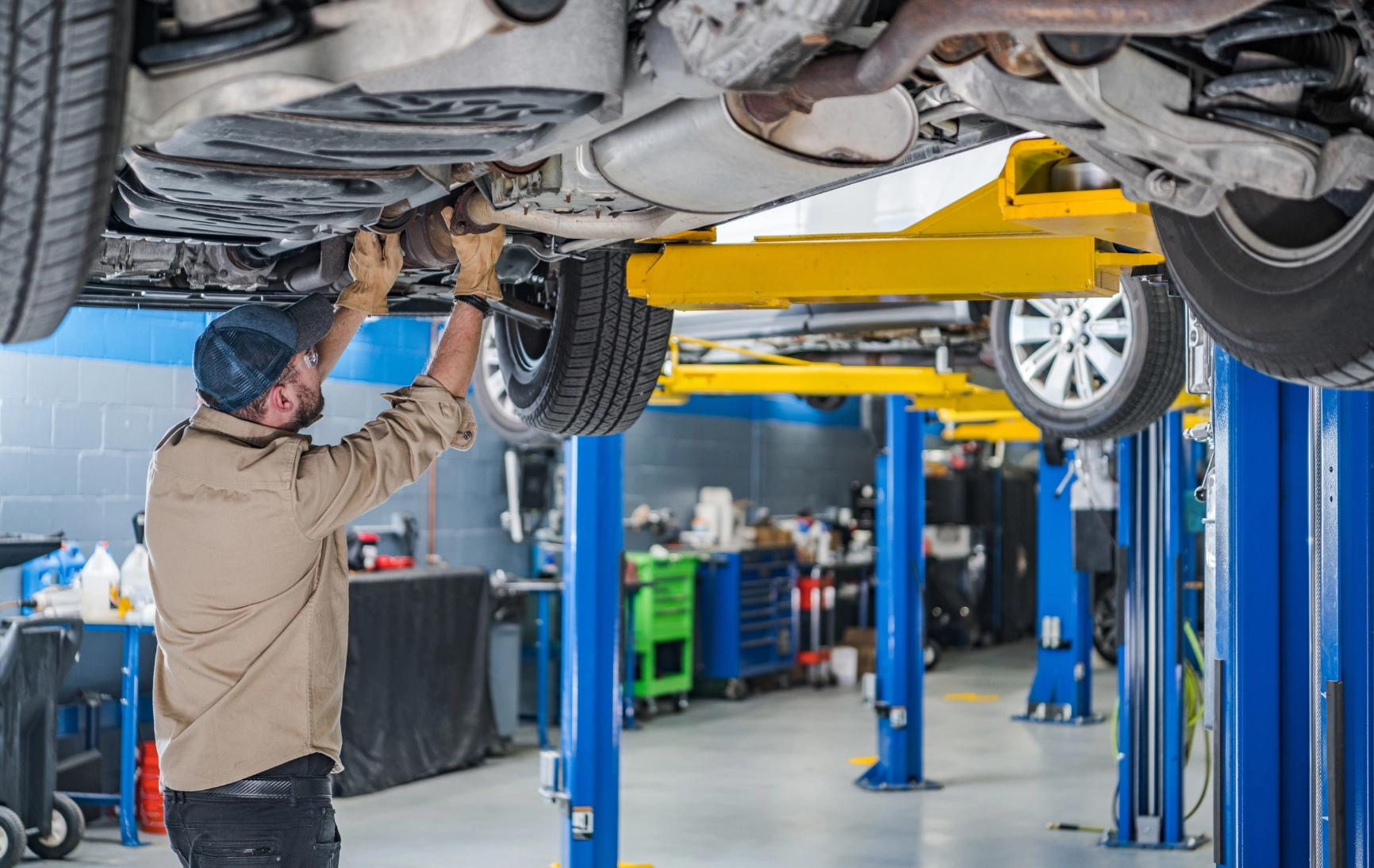All Categories
Featured

[/image]

Two crucial solutions that are usually ignored however have a substantial impact on tire long life and efficiency are tire rotation and alignment. Let's dive into what tire turning and alignment are and why they're vital for your vehicle.
What Is Tire Turning? Tire turning is the procedure of relocating your tires from one position to an additional to guarantee they wear uniformly. Given that your auto's tires work at different prices relying on their setting (front tires versus back tires), turning them on a regular basis aids to disperse the wear equally, resulting in a much longer life expectancy for your tires.
Tires on the front axle often tend to put on more rapidly than those on the rear axle, specifically in front-wheel-drive autos, where the front tires take care of both steering and power. On the various other hand, rear tires may put on unevenly depending upon the car's weight circulation and driving problems. By turning your tires every 6,000 to 8,000 miles (or as advised by the producer), you'll make certain a much more well balanced wear pattern.
What Is Tire Alignment? Tire positioning, likewise called wheel positioning, refers to changing the angles of your cars and truck's wheels to the maker's specs. Appropriate alignment guarantees that your tires are aiming in the best instructions, and it aids make the most of tire life and improve automobile handling. There are 3 primary aspects of alignment: camber, wheel, and toe.
Camber refers to the tilt of the tires from the front of the automobile. If your tires are slanted as well much inward or external, it can create uneven wear. Caster describes the angle of the guiding axis when watched from the side of the automobile. This influences the security of the steering, specifically when driving right. Toe describes the angle at which the tires aim inward or external when watched from above. This influences how your car tracks when driving. An appropriate placement ensures that all 4 tires are pointing directly in advance and are angled correctly. Imbalance can arise from striking pits, curbs, or merely from the wear of suspension parts with time.
Why Tire Turning and Alignment Matter. Extended Tire Life. Both tire rotation and positioning aid stop irregular tire wear. When your tires use equally, they last much longer, which can save you money in the lengthy run by decreasing the need for premature substitutes.
Improved Security. Proper tire turning and placement improve car security and handling. Misaligned tires or erratically used tires can adversely impact your ability to guide and quit your vehicle, especially in emergency scenarios. Regular maintenance ensures your tires carry out ideally, supplying a much safer driving experience.
Much Better Fuel Performance. If your tires are not straightened correctly, they might drag against the road surface, triggering resistance. This added rubbing can decrease gas efficiency, creating your lorry to take in even more gas. Regular tire placement makes sure that your lorry relocates successfully, boosting gas mileage.
Boosted Convenience. Imbalance or erratically worn tires can bring about a rougher experience, as your vehicle might draw away or trigger resonances. By keeping your tires turned and lined up, you'll take pleasure in a smoother and a lot more comfortable driving experience.
Indications That Your Tires Required Rotation or Placement. It's vital to stay sharp for any indicators that your tires require rotation or placement. Watch out for these usual indications:
Irregular Tire Use: If you discover that one tire is significantly a lot more used than the others, it might be time for a rotation or alignment. Guiding Pull: If your cars and truck draws away while driving right, this can suggest misalignment. Vibrations: If you really feel resonances in the steering wheel or the cars and truck itself, maybe an indication of misalignment or irregular tire wear. Screeching Tires: Uncommon tire sound can additionally show improper positioning or the need for a tire rotation. Exactly how Frequently Should You Turn and Align Your Tires? Tire rotation must usually be done every 6,000 to 8,000 miles or as specified in your vehicle's owner's handbook. It's a good idea to revolve your tires during every oil adjustment, as this will certainly help you remain on top of regular upkeep.
As for alignment, it does not call for as constant solution. Typically, placement needs to be inspected at the very least annually or whenever you notice problems like drawing away or resonance. You may likewise require alignment if you have actually struck a big pit or curb, which can toss your wheels out of placement.
Verdict: Keep Your Tires in Top Forming. Tire turning and placement are important solutions that maintain your automobile running efficiently, securely, and successfully. By making the effort to have your tires revolved and aligned frequently, you're investing in your vehicle's performance and durability, while also improving your security when driving. Remain positive with tire maintenance, and your automobile will certainly thanks with much better gas economic situation, boosted handling, and prolonged tire life.
Latest Posts
How Consistent Vehicle Maintenance at Montclare Auto Repair Reduces Costs
Uncover Montclare Auto Repair’s Most Popular Services and Why Drivers Trust Them
Discover Why Chicago Drivers Prefer Montclare Auto Repair for Trusted Service and Great Savings
More
Latest Posts
How Consistent Vehicle Maintenance at Montclare Auto Repair Reduces Costs
Uncover Montclare Auto Repair’s Most Popular Services and Why Drivers Trust Them
Discover Why Chicago Drivers Prefer Montclare Auto Repair for Trusted Service and Great Savings